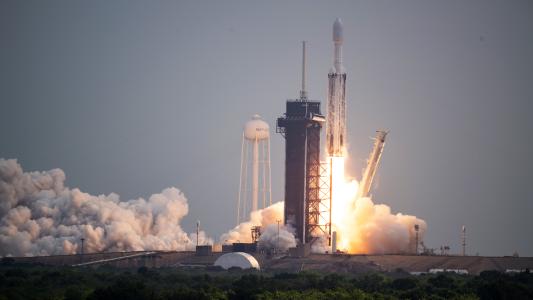Elon Musk’s Starlink is making moves this month, expanding its coverage area to include the entire US and announcing the launch of a new “Direct to Cell” service in 2024 — but Jeff Bezos’ Amazon is finally ready to compete for a slice of the satellite internet pie.
The challenge: An estimated 42 million Americans don’t have access to high-speed internet, putting them behind on access to jobs, education, entertainment, and all the good stuff that people with broadband take for granted.
While cost is a barrier for some, others live in rural or remote areas where high-speed infrastructure simply isn’t available, and the cost of installing cables to expand their coverage areas might never seem worthwhile to ISPs.
What’s new? Because satellite internet is beamed down from Earth’s orbit — rather than delivered through networks of terrestrial cables — providers just need to add more (or more powerful) satellites to their constellations to expand their coverage and bandwidth.
In February 2023, Elon Musk’s SpaceX began doing just that, adding more powerful second-gen satellites to its internet-beaming Starlink constellation. On October 2, it announced that the Starlink service was now available across the entire US.
That same day, it also removed the waitlist that had forced people in certain parts of the nation to wait weeks or months to access the service after signing up for it.
Bonus feature: You currently need a base terminal to access Starlink internet — basically a small satellite dish on your house — but on October 10, SpaceX launched a website advertising a new “Direct to Cell” service that will allow LTE phones to directly access the Starlink network for calling, texting, and internet access.
The primary function of this service will be helping people stay connected even when they’re in remote areas without cell towers. When the service launches in 2024, users will only be able to use it for texting, but SpaceX plans to add voice and data in 2025.
Another space race: Starlink is currently one of just a handful of satellite internet providers in the US, but the group is about to grow by one, thanks to Musk’s long-time rival in the space industry, Amazon founder Jeff Bezos.
“This is Amazon’s first time putting satellites into space, and we’re going to learn an incredible amount.”
Rajeev Badyal
On October 6, Amazon launched the first two test satellites for Project Kuiper, a satellite internet project it announced in 2019, the same year SpaceX launched its first Starlink satellites. Amazon’s plan is to deploy more than 3,200 satellites over the next few years and start providing internet service to US customers in 2024.
“We’ve done extensive testing here in our lab and have a high degree of confidence in our satellite design, but there’s no substitute for on-orbit testing,” said Rajeev Badyal, Project Kuiper’s VP of technology. “This is Amazon’s first time putting satellites into space, and we’re going to learn an incredible amount regardless of how the mission unfolds.”
The big picture: Satellite internet constellations can help close the digital divide, especially if they’re affordable, which Amazon claims is a “key principle” of Project Kuiper, but they also create several problems that don’t exist with terrestrial internet services.
One is the fact that the satellite constellations interfere with astronomers’ view of the night sky. This is a well-known issue with Starlink, and even though its Gen 2 satellites are less bright than their predecessors, they’re still visible. The addition of thousands of Kuiper satellites will only exacerbate the issue, and there are several other companies planning to launch fleets of tens of thousands of satellites, too.
If these satellites aren’t properly deorbited after use, they can contribute to the growing problem of space debris, which threatens operational spacecraft, too. The FAA is also investigating the potential for bits of deorbited Starlink satellites to survive the plunge through Earth’s atmosphere and harm aircraft or people on the ground, though SpaceX denies that that’s possible.
Ultimately, we need a way to get everyone online, and satellite internet seems to be one of the most viable options, so it’ll be up to regulators to strike a balance between internet providers’ need to deploy satellites in space and scientists’ need to see and safely navigate it.
We’d love to hear from you! If you have a comment about this article or if you have a tip for a future Freethink story, please email us at [email protected].






